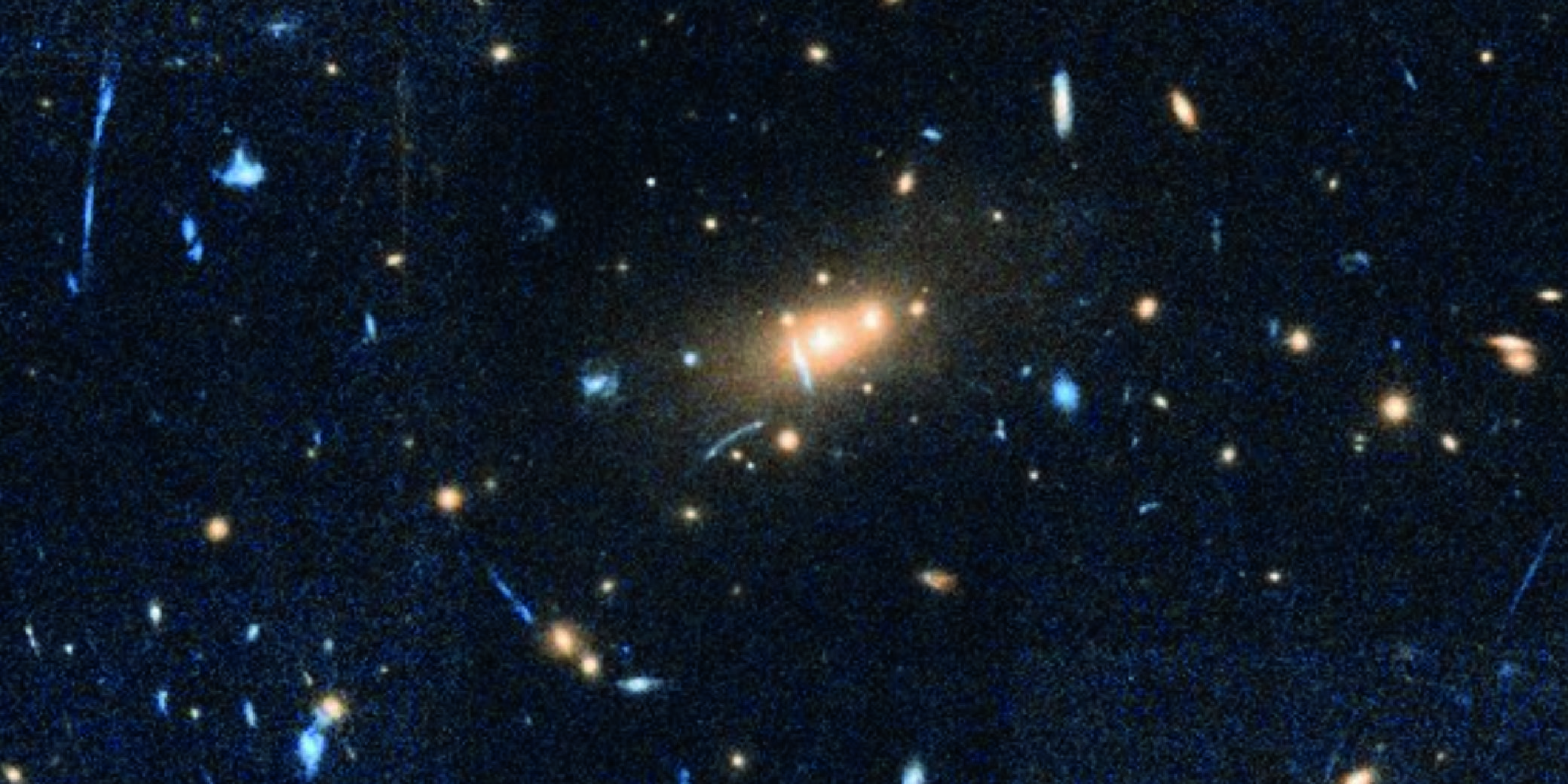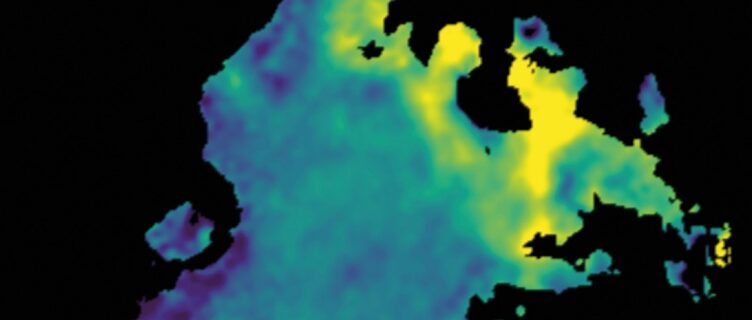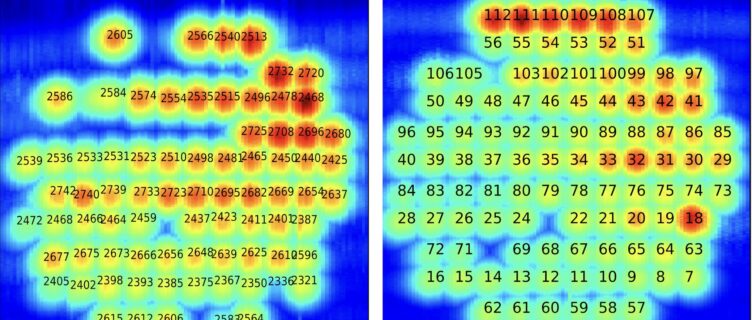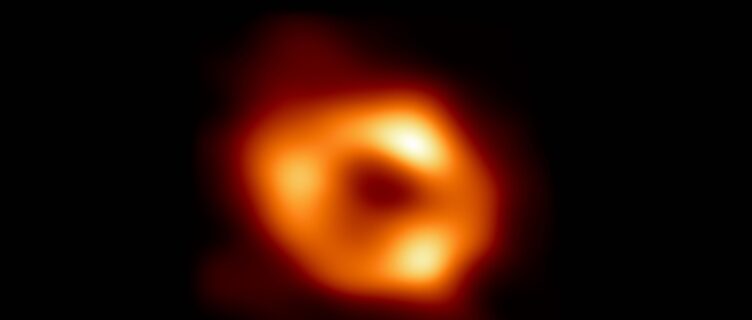An international team of astronomers using the NOEMA interferometer has, for the first time, detected the thermal Sunyaev–Zel’dovich (tSZ) effect with this facility, revealing the hot gas at the core of the distant galaxy cluster CL J1226.9+3332, located almost seven billion light-years away (z=0.89). The new observations show that this gas does not compress toward the centre as expected, a sign that the cluster is still in the process of reaching a stable state.
Galaxy clusters are the largest gravitationally bound structures in the Universe, filled with an extremely hot gas that emits X-rays and interacts with the cosmic microwave background radiation (CMB) through the tSZ effect. This effect occurs when high-energy electrons in the hot gas collide with CMB photons, boosting their energy and slightly distorting the CMB’s spectrum in the direction of the cluster. Measuring how this gas is distributed tells astronomers how clusters grow, merge, and evolve. Until now, however, the central tens of thousands of light-years – the region where galaxies, black holes, and turbulent plasma all interact – remained blurred even in the best single-dish images.
By mapping the tSZ signal at arcsecond resolution, NOEMA has now opened a new window onto the internal structure of high-redshift clusters. These observations show that interferometers can complement large single-dish telescopes to trace the pressure and energy balance of the intracluster medium from the core to the outskirts. The team achieved the first detection of the tSZ effect with NOEMA, demonstrating its capability to resolve the hot electron gas that fills distant clusters. Thanks to its high sensitivity, the astronomers were able to identify and remove contaminating galaxies in the field and isolate the faint tSZ signature from the cluster’s own plasma.
The resulting map traces the distribution of the thermal gas down to just 15 kpc (about 50.000 light-years) – a scale never reached before in this cluster. When combined with earlier measurements from the IRAM 30-meter telescope with NIKA and NIKA2, MUSTANG at the Green Bank Telescope, Bolocam at the Caltech Submillimeter Observatory, and the XMM-Newton satellite, the NOEMA data complete the picture of how pressure changes from the cluster’s core out to 1.5 Mpc (about 5 million light-years). Instead of rising sharply toward the centre, as expected for a relaxed cluster, the pressure of the hot gas remains remarkably flat suggesting that the system is still disturbed by past mergers or by activity in its central galaxy. This behaviour contrasts with the quiescent, centrally peaked pressure seen in mature clusters nearby, hinting that the early Universe was a complex and dynamically active environment, even across mega-parsec (Mpc) scales.
The success of this observation paves the way for future NOEMA studies of distant clusters and proto-clusters, including those being discovered by optical and infrared surveys such as that of the Euclid satellite and the Vera-Rubin observatory. By probing the tSZ effect in cluster cores, astronomers will be able to examine how feedback from galaxies and black holes shapes the thermal history of the largest structures in the cosmos. With NOEMA now joining ALMA in this quest, researchers can explore both hemispheres of the sky and follow the cosmic evolution of hot gas, from the dawn of clusters to the well-formed giants we see today.
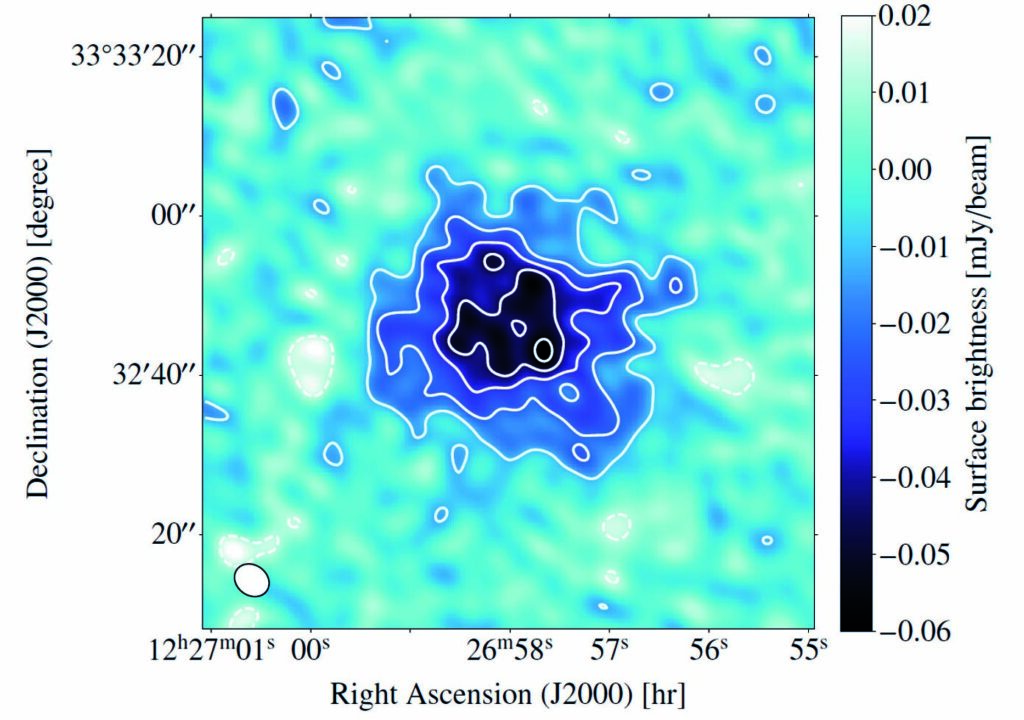
Thermal Sunyaev–Zel’dovich (tSZ) effect detected by NOEMA toward the distant galaxy cluster CL J1226.9+3332. The dark blue and black region at the centre shows the tSZ signal, a dimming of the cosmic microwave background (CMB) caused by scattering from the hot electrons that fill the cluster. These high-resolution NOEMA observations trace the pressure of the intracluster gas down to scales of about 15 kpc, revealing a surprisingly flat pressure profile in the cluster’s core.
The research by Miren Muñoz-Echeverría (IRAP, Toulouse) and collaborators is presented in the paper Thermal SZ effect at the core of CL J1226.9+3332 revealed by NOEMA, accepted in Astronomy & Astrophysics (https://ui.adsabs.harvard.edu/abs/2025arXiv250914048M/abstract)
Top banner is from https://iopscience.iop.org/article/10.1088/0004-637X/691/2/1337 by M. James Jee and J. Anthony Tyson
Our latest updates
Explore all the latest news from our research and technology groups and never miss out on important upcoming events.


